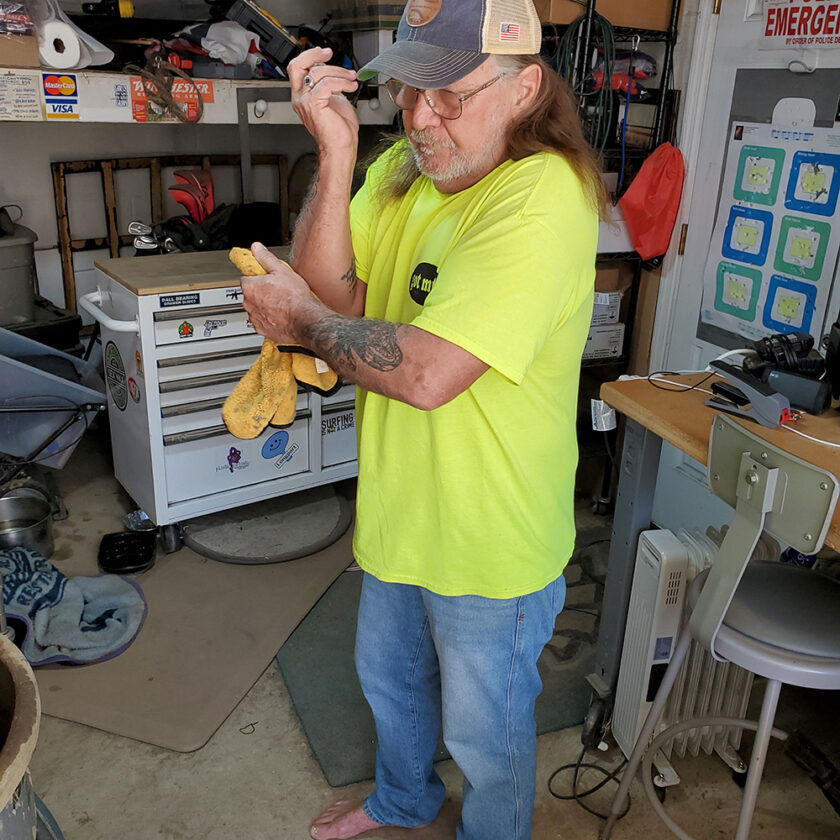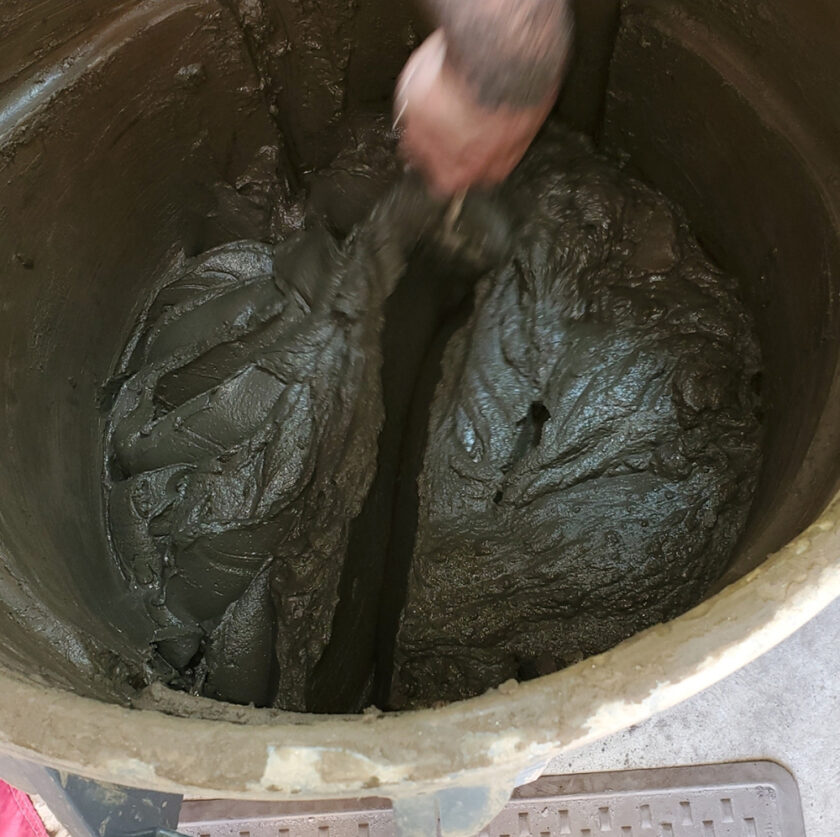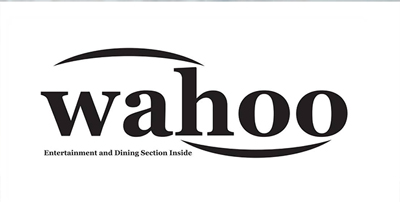By William Sokolic
When Jim Bintliff retired from the printing business in 2016, nothing stood in the way of him and his wife moving from Delran to their dream house in Longport, not even the mud.
The mud?
The mud. The family business for more than three generations.
Bintliff harvests and sells what some call magic mud to all Major League and minor league baseball clubs, and a fair amount of college programs. The mud, it turns out, has the perfect blend of ingredients to take the edge off a thrown baseball, making it easier for a pitcher to grip than a shiny new ball just out of the box.
The mud is gathered from a tributary of the Delaware River somewhere in South Jersey. Like his parents, grandparents, and company founder Lena Blackburne before him, he is sworn to secrecy as to exactly where the mud comes from and the formula for its preparation. But Longport is at least 60 miles from the Delaware; Delran runs along the river.

It’s worth the extra drive, Bintliff said. “It’s a different pace in Longport,” he said. A slower pace, at least in the off-season. Besides, Bintliff doesn’t really need to harvest that often and he has a helper or two nowadays to assist with the 5-gallon buckets of mud to be transported.
Bintliff ships completed mud out daily, but only harvests once or twice a month, all year long.
Once back in Longport, the harvest sits a couple days while the mud settles, and water is left. “I dump off the river water for fresh water.” The remaining mud goes into a trashcan to marinate for up to three weeks.
He then fills containers to be shipped like he was sending out quarts of ice cream. He prepares and packs the mud from a garage in the small cottage where he lives. Two of his neighbors have similar houses. A handful of McMansions tower over the rest of the block. This is Longport after all.
When the mud arrives at the various ballparks, clubhouse attendants cover the baseballs under direction of the umpires. In the minor leagues, the umpires manage the process. After processing, the balls end up in a humidor until needed.
The mud story begins in 1920, and nowhere near Longport or Delran, but in a Major League stadium when Yankee pitcher Carl Mays drilled Cleveland Indians shortstop Ray Chapman in the head during a game. Chapman died early the next morning, the first and to date, only Major League player killed by a pitch.
Baseball sought a remedy against future incidents. In retrospect, the answer may have been the adoption of helmets much earlier – if helmet technology were up to it. Instead, baseball looked toward the balls. The shine on new baseballs makes them harder to grip, easier to get away from the pitcher. It took more than 15 years of experimentation with different substances to arrive at the correct formula, with Blackburne, a former ballplayer turned coach for the Philadelphia Athletics, the victor.

Blackburne grew up in the Palmyra area, where he fished in the tributaries that flowed into the Delaware throughout South Jersey, often with his childhood friend, John Haas, Bintliff’s grandfather. He gathered mud samples from various tributaries, placed them on balls, and after some doctoring, it did the job. Blackburne sold the product as Lena Blackburne Baseball Rubbing Mud.
In the mid-1930s the American League teams agreed to use the mud, with the National League coming onboard in 1950. For Blackburne and his successors, the deals were concluded with a verbal agreement, no formalized contract and that’s the way it remains, Bintliff said.
“In 1955, Lena turned the business over to my grandfather,” he said. “In 1965 my mom and dad – Catherine Haas-Bintliff and Burns Bintliff took over.”
Bintliff took over the collections and preparation in 1980, and the business itself in 2000.
He had four brothers and four sisters. “In the early ’70s, my mom picked me to take over. It’s just the way it worked out. I was also the only one who stayed in New Jersey near the mud,” he said.
Today, every team has to have their baseballs prepared before every game using the Lena Blackburne mud, said Kevin Gregg, vice president of baseball communications for the Philadelphia Phillies. “That is a requirement of MLB. Members of the home team’s clubhouse staff prepare them daily.”
There is a chart for the clubhouse staff to follow in terms of the application. The balls can’t be too light with mud or too dark. If players object that the mud impacts the ball in favor of the pitcher or hitter, well they’ve never known anything different in pro ball, Gregg said.
“Pitchers may have an issue with the feel of a prepared ball in games, and if so, they can toss them out and ask the umpire for another,” he said.
Can the mud come from other areas? Perhaps. The mud in the back bays near Longport tends to smell.
“Mine carries no smell,” Bintliff said. “I do not know if it has the same mineral content. Mine has a unique take.”
Researchers at University of Pennsylvania tested the mud and published results in the Proceedings of the National Academy of Sciences last November to see if a reason can be determined for its success. The scientists, including Douglas Jerolmack, focused on how the mud works.
“It didn’t feel gritty, and it smeared and spread easily,” Jerolmack said in the March/April issue of The Pennsylvania Gazette. They spent two years experimenting with the mud. The mud creates a smooth baseball surface by filling in pores on the leather hide holding the ball together. A small amount of sand grains adheres to the ball and creates friction.
“The family relies on an extraordinary amount of knowledge to get everything just right,” Jerolmack said
Bintliff, in his late 60s, has already prepared for the future.
With four children and six grandchildren, the mud business will stay in the family. His youngest daughter is president, and all the kids help out. His oldest son has three daughters. “The youngest helped for years packaging. They’re all good with the arrangement.”
William Sokolic is a veteran journalist who has written for daily, weekly and monthly publications. He’s covered a wide range of news, features and entertainment stories. Much of his work concerns tourism, Atlantic City, and the gaming industry.















